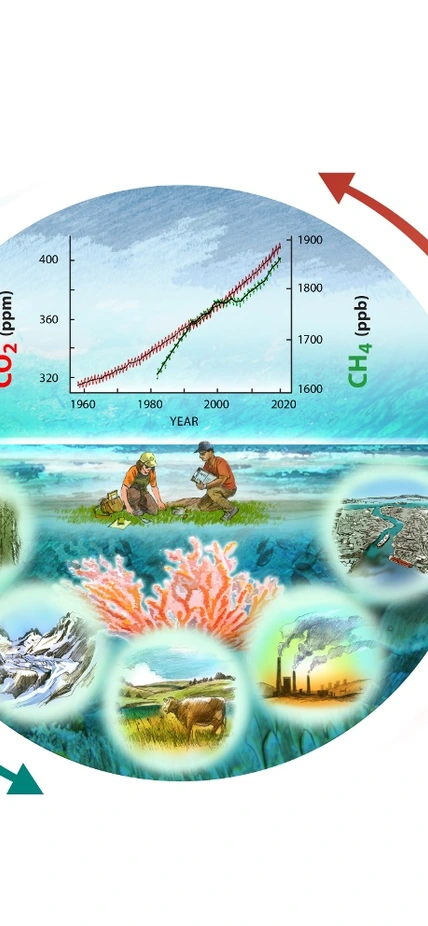Washington, DC—Carnegie’s Anna Michalak was a major contributor to the U.S. Global Change Research Program’s Second State of the Carbon Cycle Report released last Friday, which provides a current state-of-the-science assessment of the carbon cycle in North America—including the United States, Canada, and Mexico—and its connection to climate and society.
Over the past decade, fossil fuel emissions continued to be by far the largest North American carbon source. Urban areas in North America are the primary source of anthropogenic carbon emissions.
But land ecosystems and the ocean play a major role in removing and sequestering carbon dioxide, CO2, from the atmosphere. Each year between 2007 and 2016, these reservoirs removed and stored an average of about 5.4 billion metric tons of carbon globally that otherwise would have remained in the atmosphere—about half the amount of carbon that was emitted during that period. North American ecosystems account for about 11 to 13 percent of global ecosystem carbon removal.
At the global level, land-use change caused by social, demographic, and economic trends is projected to contribute between 11 and 110 billion metric tons of carbon to the atmosphere by 2050. However, the trend in the United States is the opposite; current assessments suggest that better forest management practices, as well as reforestation and other improvements in ecosystem and resource management, are helping the nation decrease its carbon emissions.
The findings provide an up-to-date assessment of the North American carbon cycle, including the sources of carbon and how it flows and sinks across the atmosphere and in aquatic and terrestrial ecosystems. Significant advances were made in the scientific understanding North America’s carbon cycle in the decade since the first SOCCR report was issued in 2007.
“The good news is that over the last decade, energy-related carbon dioxide emissions have begun to decrease slightly in the United States, due to a variety of market, technology, and policy decisions,” remarked Michalak, who was a lead author on chapter one and co-author on chapter 19 of the assessment. “This suggests that humanity can change the tide if we have the wherewithal to do so.”
The report’s specific focus areas and guiding questions related to global-scale research on long-lived, carbon-based greenhouse gases—particularly carbon dioxide and methane—were inspired by the community report A U.S. Carbon Cycle Science Plan, which was led by Michalak and published in 2011.
This interagency assessment was led by the Carbon Cycle Interagency Working Group and U.S. Carbon Cycle Science Program under U.S. Global Change Research Program auspices. Assembled with contributions from more than 200 experts, the report was intended to inform both scientists and decisionmakers in the public and private sectors.
Caption: SOCCR2 cover art.
